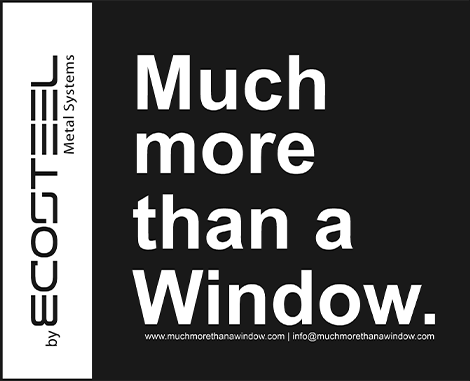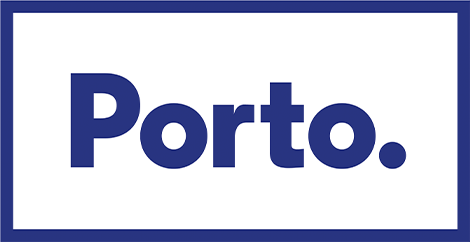PETER MEEKER COLLECTION
WORKS FROM 1982 – 2019
Peter Meeker Collection: Works from 1982 – 2019 is an extensive exhibition on the occasion of the 4th anniversary of Casa São Roque – Centro de Arte in Porto, Campanhã. It presents selection from Peter Meeker’s (Pedro Álvares Ribeiro’s) international art collection, which started in the 1980s in Porto, includes 40 artists and over 600 artworks. Based on the long term friendships and dedication to the collected artists, in many cases it attained extensive representations of their oeuvres and artistic series, which nowadays have become canonical. Whilst remaining ongoing, its main part has been formed until 2019, becoming collection of Casa São Roque. Works of Portuguese, Polish and Spanish artists are an important nucleus, which reflects collector’s long term stays and life shared between three countries, as well as close relationships developed within the four cities: Porto, Warsaw, Lisbon, Madrid.
This is the third group presentation of Peter Meeker’s collection, after 2022 site-specific Sala de Jogos in historical ballroom of the Club “O’Elvas” as part of the 15 Anos de MACE in Elvas (curated by Barbara Piwowarska), and the most recent display in the frame of the Arte em São Bento programme in Prime Minister’s Residence in Palacete São Bento in Lisbon (curated by João Silverio). Peter Meeker Collection: Works from 1982 – 2019 at Casa São Roque, Porto derives from these two exhibitions and was prepared jointly by Barbara Piwowarska and João Silverio. It focuses on generations of artists who grew up in countries which regained freedom after repressive political regimes, and who share existential positions: Polish ones reflecting transformation after 1989, and Portuguese reflecting modernization after 1974 revolution.
Paweł Althamer’s Fairy Tale (1994–2004) features figures-puppets of parents dressed in the second hand clothes, dancing in a circle keeping their wire hands, while waiting for their children to be picked up from the art class in Warsaw. This installation, remodeled, destroyed and recreated several times, addresses action and video Dancers in which Althamer, known from his “social sculptures”, practices of the “open form” and art courses for marginalized groups, invited collaborators met in a homeless shelter to practice circular ritual dance.
It is juxtaposed with 1998 choreographic video by Ângela Ferreira filmed at the Estádio Nacional de Portugal – a public commission of the Estado Novo inaugurated in 1944 by António de Oliveira Salazar, in which female figure dressed in a military uniform is doing exercise similar to a dance, reminiscent of the major events dedicated to sport, especially gymnastics, an educational discipline chosen by the propaganda of the regime. The uniform is a memory holder of the Colonial War [Angolan, Guinea-Bissau and Mozambican War of Independence] – a central theme and question in Ferreira’s work.
Choreography of serving was studied by Jorge Molder in his photographic series Waiters (1986) in which he captured figures of waiters’ and their movements in café Nicola in Lisbon. Blurred into surrealistic compositions and unreadable gestures, these photographs are also rare examples in his oeuvre: they do not depict author’s self-representations, Molder’s own face and body, but through the mirrors and the distortion of the image they reveal his bodily voyeuristic method.
Body is also present in a leather relief by Gerardo Burmester from the series Maria (1989), “frame-objects” he has been working on at that time. Emerging from his performative and painterly practices, examination of the condition of the painting and its subject, they resulted transition into three-dimensional pictorial spaces, into objectual that incorporated the wooden frame of the work.
The matters of the skin and body are crucial for the small, haptic and “manipulative” series of the perverse leather sculptures Santos (1988) by Pepe Espaliu, but also for the nearby displayed brittle white-gray object by Franz West. Made of plaster, cardboard and gauze, it is possibly one of the 1980s Adaptives (Paßstücke) – interactive object of the peculiar status between an artwork and prosthesis. Standing on a shelve of the neo-empire fireplace, on which originally Napoleon Bonaparte’s bust was placed – it looks like a bandaged limb.
Espaliu’s historical Carrying series (1992) is derived from his workshops and public actions in San Sebastian and Madrid, conceived by him as a “social sculpture”, in which people were carrying him sitting on their arms, manifesting fragility of his body infected by AIDS. Sculptural versions of “carryings” were opposite: just one year before he passed away in 1993, they were cast and forged in iron as strong constructions: solid sticks-handles connected with the imaginary parts of the corpus.
Early works of Mirosław Bałka, Polish artist having strong ties with Spain, are displayed in dialogue with Carrying. Duerme bien, Luis (2001) is an installation-homage to Bałka’s friend, a Catalan painter Lluís Claramunt. They consist of typical, modest and commemorative materials used by Bałka. A plywood shroud is covered with a soap, becoming an evidence of washing the body and an absence of the figure. It is matched with a toy-bed from the times of artist’s childhood, too small to accommodate the body – it addresses the discomfort of the dreams after death. Buen Libro Vacio (1999) is an iron plate mounted on construction poles. It looks like an open book which collects an absent liquid (or knowledge) to the attached can, like notches are cut into trees to channel the resin into container. Lebensraum (2003) refers directly to the expansion of a living space. It consist of a light-box replica of the single-person tombstone in size typical of the Otwock cemetery, a type produced by his grandfather Wiktor Bałka, and a springboard which goes outside the window of Casa São Roque. In artist’s words, it shows an opportunity to find an unconventional way out of an uncomfortable situation, such as life.
Eschatological view is shared by Rui Chafes, who treats life as a burning process. Many of his sculptures represent missing people, absent body and discomfort of life, including series Incêndio (Burning) from 2016. They are analogical to the earlier serial works such as Lessons of Darkness (Lições de Trevas) from 2002, which are of human measures, and initially existed in bigger groups in first installations, resembling army of soldiers or group of believers. The earliest work in this exhibition is hand-made Deine Stimme (Your Voice) from 1997 which is suggestive of the instruments or giant musical tools, hanging on the level of human’s belly, wrapped in tin pieces of metal alike a fabric bandage.
Paulo Nozolino, known from his existential series of photographs reflecting his long serial travels across the world, capturing changing societies (especially in 1989–1996) is present through two different ways of looking into past. Regard sur le Musée Fenaille / avant travaux (1993) was series made in the historical-archeological museum located in a private mansion of the collector Maurice Fenaille in Rodez. It depicts museum before renovation, in which display units, paintings and sculptures have second unofficial quiet life, are put aside, not being yet “exhibited”. One of the Suspiros de chumbo (1997) depicts tombstones crosses in Venice cemetery and references Venice Preserv’d (A Salvação de Veneza) by Thomas Otway, a political play from the British period of Restoration.
Francisco Tropa uses wide index of references to collective imagination. His viewer is subject to a disruptive movement of perception that triggers network of connections, between the enigma and the apparently fictional narrative. O olho vigilante (2001) references directly Jacques Callot’s 1628 etching The Vigilant Eye from the Lux claustri series. It is an interesting redaction of the biblical iconography of a Good Sheppard, depicting one stick with a watching eye in a bucolic landscape with some animals and no human. Instead of one stick, Tropa made two in bronze and juxtaposed them with a tautological photography. The most recent object is Maça from 2019, a sculptural trompe l’oeil made in bronze and painted, is playfully kept hanging, suspending fall down from the tree or being picked up from it, thus suspending the sin of Adam and Eve. It is paired with the very little hanging object Lead (2008) by Monika Sosnowska, a door handle with imprint of the feast and fingers, made of iron and lead.
Two untitled wooden sculptures by Rui Sanches (2000) establish several relationships in the space: one between the scale and proportion, the second between the two works, and the third one resulting in experience of corporeality of the spectator’s body and time. The last element is present when we are observing the stratified construction of the sculptures that consist of overlapping wooden sheets, defining the shape of each of the works. In this sense, the idea of time is close to the practice of drawing, as a method, which allows us to think about the almost tactile corporeality of each of the sculptures, incorporating the body and surrounding architecture.
Susana Solano, a Catalan sculptor, remains in a close dialogue with Spanish and Portuguese artists for many years. At Casa São Roque displayed is her solid iron object of the reduced size, unusual in comparison to the large scale of her work. By positioning the body (or its absence), it corresponds with sculptures of Bałka, Espaliu, West and Sanches. It resembles container that reveals itself between what is inside and what is outside, like the body that symbolizes its presence precisely by revealing its “interior”, apparently empty.
Monika Sosnowska’s works are presented in dialogue with José Pedro Croft and the constructivist legacy. An early sketch for a sculpture and an analogical model for the large-scale installation Bon Voyage (2000) resemble Katarzyna Kobro’s spatial compositions or De Stijl’s architectural models. Prepared in Sosnowska’s studio at the Rijksakademie in Amsterdam, the prototype was designed to be placed inside the large final structure, on the floor, to introduce the aspect of scale. The large-scale work was a hybrid composition inviting immersion in the colourful, “spatial painting”.
Selection of works by José Pedro Croft focuses on the notion of scale and revisits several periods of his work, including group of important sculptures made of different materials: painted bronze, wood, metal, mirror, plaster (1988–1997), architectural-abstract prints of different formats (1999), or constructivist-architectonic relief from 2004. The 1997 Untitled sculpture stays on tin “limbs” and challenges our body in the space as it is installed, causing a feeling of imbalance, in the relationship of tension with the architecture, which is essential vocabulary of Croft.
El rojo en el Periodico and El Verde en el Periodico (2012) by Ignasi Aballi are good examples of his artistic process, in this case consisting of fragments of inkjet prints on photographic paper. Aballi works with different media such as painting, objects, artists’ books, photography, film and video, and sometimes in large-format installations. Time, memory, or its absence, and thus the perception of a possible presence, comes from a practice of collecting different elements of everyday life, organized in an atlas of inventories and classifications – from the fictional narrative to the evocative presence of the material.
Pedro Casqueiro’s untitled painting from 1985 is one of the first collected by Pedro Álvares Ribeiro, and marks the beginnings of the collection. In this oil painting the composition is fragmented and reveals several other compositions within the painting, as if other layers of images, foreground and background, figurative and abstract, were continually accumulated, exceeding the flat surface of the canvas through the collage of other small paintings.
In Pedro Calapez’s drawings from the same period (1984 and 1985) we can recognize fictional architecture with a classical matrix, which look alike houses, monuments or tumulus in the same time. Made with a very fast, expressionistic and physical gesture of hundreds of oil pastels lines, they correspond with palette of his paintings, and are typical of his work from that decade.
Arroios, 25 Março 82 by Julião Sarmento (1982) is the earliest work in the collection. It is a painting-collage that belongs to artists’ vast repertoire of personal and autobiographical references. It commemorates his [adopted] grandfather’s death and depicts defragmentation of such an experience, composed of four painted images-fragments. The biggest central one on the upper part of the work shows body in a Wake (on Viewing) with surrounding prayers, a traditional ritual before the funeral. Beneath the image stays an inscription, a practice that Sarmento developed throughout his entire work. At the bottom, drawings appear as fragments of the memory of those close to him, as data for the further narratives that must be developed and continued by the viewer.
It is paired with Wilhelm Sasnal’s untitled oil painting, typical of the 2000s – a mysterious snapshot of the everyday life, Polish landscape with blocks of flats, plowed fields, or smoke. His language derived from the story-boards, comic books and photographic images, and remains important voice of the generation of the 1970s, growing up during the transformation of the political system after 1989. This synthetical city view depicts his hometown Tarnów and was painted after photograph from the 1970s depicting bulding site of a new residential area near his parents’ house. Sasnal’s practice includes also filming, and was always socially engaged, criticizing manifestations of mass culture, using a pastiche as its way of depicting.
Selection of the early works of Pedro Cabrita Reis from the 1980s and 1990s converses with Mirosław Bałka, Francisco Tropa and Julião Sarmento. It includes Pinturas Negras (1986 and 1998), as well as sculptures and installations: Agnus Dei (1989), Um quarto dentro da parede (1989), A casa do Céu (1990). These sculptures, from small scale to the scale of the human body, are strongly symbolic and almost religious, residing between memory and oblivion, between the archetype and the word. They are like sublimated environments, which are revealed by the materials and manufacturing process.
Augusto Alves da Silva is well known from his documentary language and sociological series in which he pokes stereotypes of both: the photography and the society. Prova de contacto (1987 / 2003) is tautological large scale composition depicting different views of the lake in the park with people and situations passing, in which 36 sequences of photographic “proofs” (normally very small viewing images) are enlarged to the “risky” formats known from the Blow-Up. The photograph from CNB series (2001) corresponds with the gesture of close up – taking focus on a detail: the mysterious abstract red cross, which appears to be a mark taped on the stage for a dancer of the Companhia Nacional de Bailado, a mark of the absent body.
Small objects by Ana Jotta are displayed as footnotes to the collection’s display. Included is also less know version of her self-referential trademark J., made of a can handle and pencil. Also here the authorship is to be questioned, thus the letter “J” constitutes a derisory work, transgressing models and modes of representation displaced from its context. Mother (A mãe) in shape of the catholic cross made of the boxes of face creams “La Mer” wrapped into black gaffer tape, and Father (O pai) resembling white feast made of cardboard and garbage bags – are back to the same wall, referencing first inaugural exhibition at Casa São Roque: Jotta’s Inventória.






























